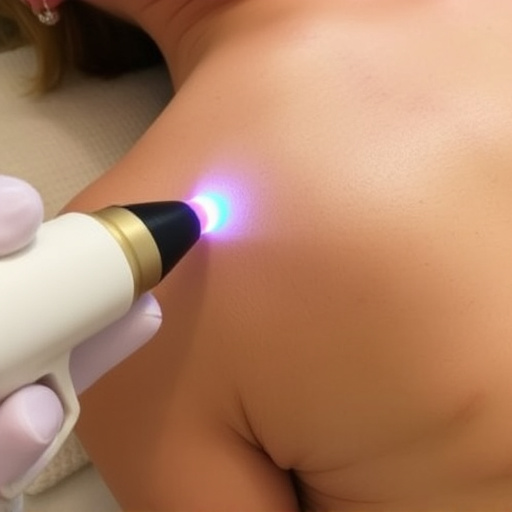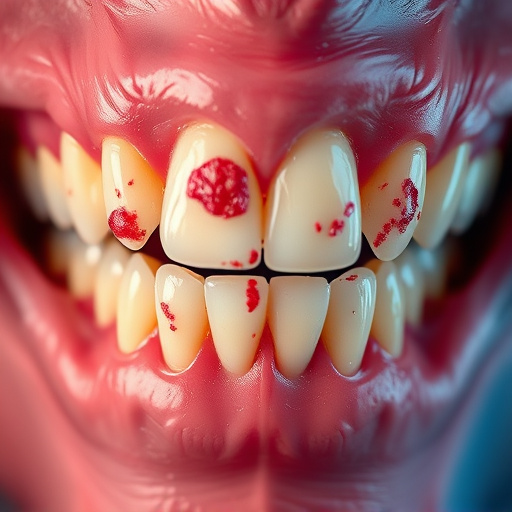Crown lengthening procedure enhances tooth aesthetics and health by exposing more natural tooth. Minimally invasive modern techniques reduce surgery & healing time, minimize discomfort, and prioritize patient comfort. Recovery involves soft foods & avoids straws, leading to stronger teeth & reduced dental issues after swift post-treatment care.
“The crown lengthening procedure is a transformative dental treatment gaining popularity for its ability to enhance both aesthetics and functionality. This minimally invasive technique offers a modern solution for patients seeking longer, healthier-looking teeth without extensive surgery.
In this article, we’ll explore the science behind crown lengthening, dissecting the minimally invasive techniques that have revolutionized the process, and providing insights into what to expect during recovery. Discover how this procedure can be tailored to individual needs, delivering optimal results.”
- Understanding Crown Lengthening: Uncovering the Procedure
- Minimally Invasive Techniques: A Modern Approach
- Recovery and Results: What to Expect After Treatment
Understanding Crown Lengthening: Uncovering the Procedure

Crown lengthening is a dental procedure that involves modifying the gum line to expose more of the natural tooth, effectively lengthening the visible portion. This treatment is often recommended when patients have teeth that are slightly covered by gums, known as gingival overgrowth, or when there’s not enough tooth structure above the gumline for restorative work, such as crowns or fillings. The crown lengthening procedure is minimally invasive and can be performed in conjunction with other dental treatments, like wisdom tooth removal or routine teeth cleaning.
During the procedure, a dentist will make a small incision along the gum line to access and carefully reshape the underlying bone and gum tissue. This process reveals more of the natural tooth, providing better aesthetics and supporting stronger, longer-lasting restorations. In many cases, patients can expect a quick recovery with minimal discomfort, allowing them to return to their regular routine in no time, even when paired with services offered at family dentistry practices.
Minimally Invasive Techniques: A Modern Approach

The crown lengthening procedure has evolved significantly with advancements in minimally invasive techniques. Traditional methods often involved extensive surgery and a lengthy recovery period. However, modern dentistry has introduced innovative approaches that offer a more conservative and patient-friendly experience. These new techniques prioritize minimizing trauma to surrounding tissues, reducing healing time, and enhancing overall comfort during the process.
By employing cutting-edge technology and precision instruments, dentists can now perform crown lengthening with smaller incisions and less disruption to gum tissue. This not only reduces post-operative discomfort but also speeds up the recovery process, allowing patients to resume their normal activities sooner. Moreover, the integration of cosmetic dentistry principles ensures that the final results align with natural dental aesthetics, enhancing both functionality and visual appeal. Even in emergency dental care scenarios, these minimally invasive techniques provide a swift solution for issues like tooth decay or misalignment, ensuring prompt relief without compromising on patient well-being.
Recovery and Results: What to Expect After Treatment

After crown lengthening treatment, patients can expect a relatively quick recovery with minimal discomfort. The healing process begins almost immediately, and within a few days, most individuals experience little to no pain. Swelling and mild sensitivity are common in the initial stages but typically subside within a week or so. During this time, it’s advisable to stick to soft foods and avoid using straws to drink, as sucking can disrupt the healing process by dislodging the clot that forms over the exposed gum line.
As the gums heal, the newly exposed tooth surfaces are strengthened, making them less susceptible to decay and gum disease. This procedure is often sought for cosmetic reasons, aiming to improve the appearance of teeth that appear too short or have inadequate tooth enamel due to genetics or previous dental work. In addition to enhancing aesthetics, crown lengthening can also serve as a preventative dentistry measure, promoting better oral hygiene and reducing the risk of future issues such as tooth decay and gum recession—a benefit that extends beyond the initial recovery period. Regular routine oral exams become even more crucial following the treatment to monitor healing and maintain optimal dental health.
The crown lengthening procedure, with its minimally invasive techniques, offers a modern approach to enhancing smile aesthetics. By addressing issues like tooth sensitivity or gum recession, this treatment provides long-lasting results while ensuring a quick recovery. Incorporating the latest advancements in dental care, crown lengthening is now more accessible and efficient than ever, allowing patients to regain confidence in their smiles without the usual downtime.














